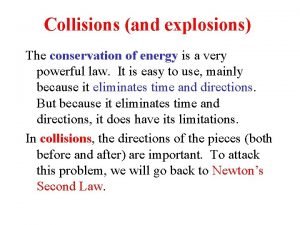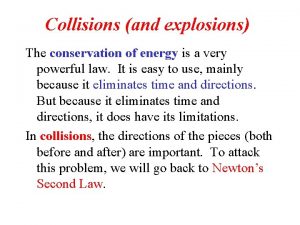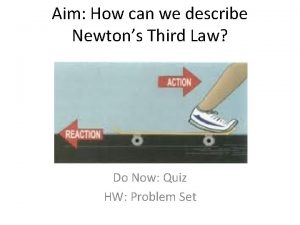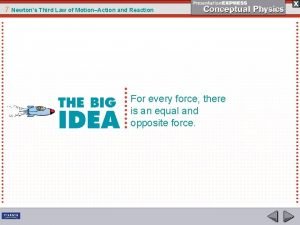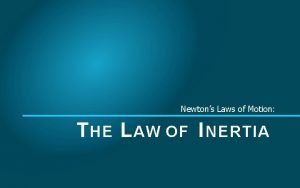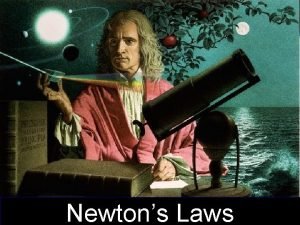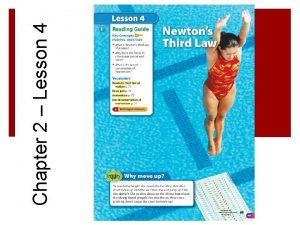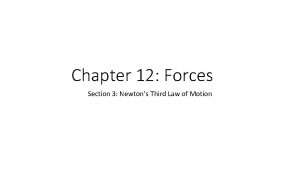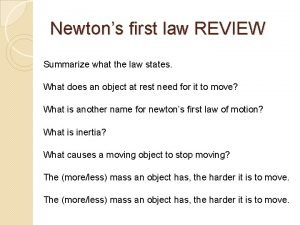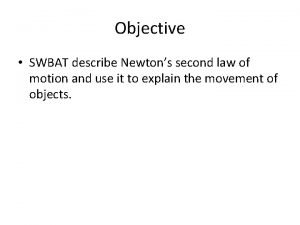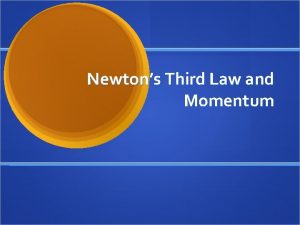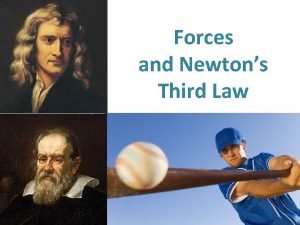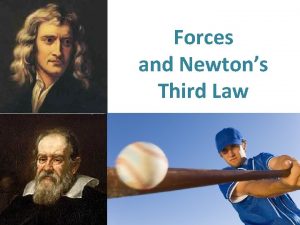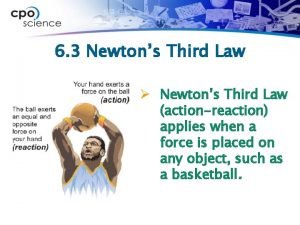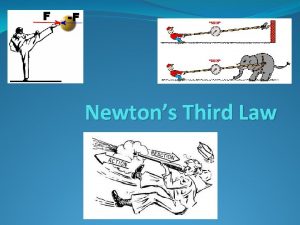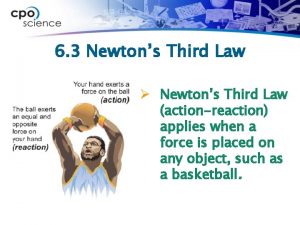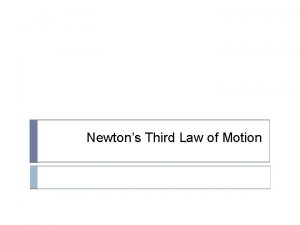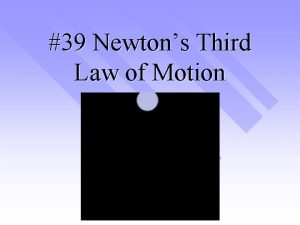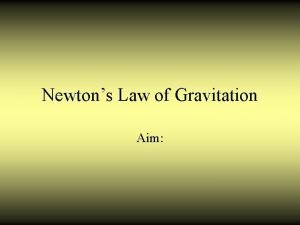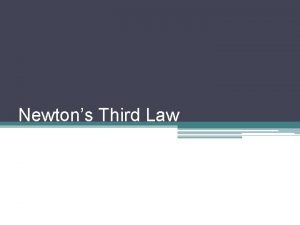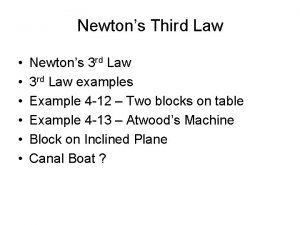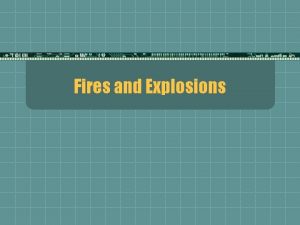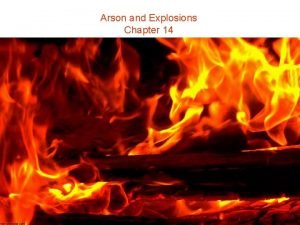Key Areas covered Explosions and Newtons third law





















- Slides: 21

Key Areas covered • Explosions and Newton’s third law. • Conservation of momentum in explosions in one dimension only. • Kinetic energy in elastic and inelastic collisions.

What we will do today • Take notes and carry out calculations concerned with a variety of collisions. • State what is meant by an elastic or inelastic collision. • Use values for kinetic energy to determine if a collision is elastic or inelastic.

Types of collision

Solving Problems 1. Always make a sketch of the system before and after the collision or explosion. 2. Mark all masses and velocities (with direction!!) on the sketch. 3. You will need to allocate a positive direction for vector quantities – mark this also on the sketch. 4. Use the rule: total momentum before = total momentum after

In general, there are three types of problem: 1. Two masses collide and move apart with different velocities after the collision: Before v 1 m 1 v 1 + After v 2 v 1 m 2 m 1 m 2 v 2 = v 2 m 1 v 1 + m 2 v 2

2. Two masses collide and stick together: Before v 1 m 1 After v 2 v 3 m 2 m 1 + m 2 m 1 v 1 + m 2 v 2 = (m 1 + m 2)v 3 where v 3 is the velocity after collision.

Explosions (Newton’s third law) • In an explosion, one body, originally at rest, explodes into two parts, moving in opposite directions. • This follows Newton’s third law – for every action there is an equal but opposite reaction. • Therefore the momentum at the beginning is zero so the momentum at the end must also be zero. • Care must be taken to use –ve values for any objects moving to the left to allow this law to hold true. • Examples include a gun shooting a bullet and a cannon firing a cannon ball.

3. An explosion. In this case: Before v After v 1 m (m 1+ m 2) v m 1 v 2 m 2 = m 1(-v 1) + m 2 v 2 If initially at rest (e. g. gun before firing a bullet), then: 0 = m 1(-v 1) + m 2 v 2

2007

Elastic and inelastic collisions

Elastic and Inelastic Collisions An Elastic Collision is one in which both kinetic energy and momentum are conserved. An Inelastic Collision is one in which only momentum is conserved. NB: In any collision all energy is conserved (cons. of energy), elastic and inelastic only deals with kinetic.

Example During a space mission, it is necessary to ‘dock’ a space probe of mass 4000 kg onto a space ship of mass 12000 kg. The probe travels at 4 ms-1, and the ship travels at 2 ms-1 ahead of the probe, but in the same direction. (a) What is the velocity of the ship after the probe has ‘docked’? (b) Is this collision elastic or inelastic? Solution Before 4 ms-1 2 ms-1 4000 kg 12000 kg m 1 v 1 + m 2 v 2 (4000 x 4) + (12000 x 2) = 16000 + 24000 v v After v 4000 kg + 12000 kg = (m 1 + m 2) v 3 (4000 + 12000) v = 16000 v = 40000 / 16000 = 2. 5 ms-1 in original direction

Kinetic energy before collision: ½m 1 v 12 + ½m 2 v 22 = (½ x 4000 x 42) + ( ½ x 12000 x 22) = 32000 + 24000 = 56 000 J Kinetic energy after collision: ½(m 1 + m 2) v 32 = ½ (4000+12000) x 2. 52 = 50 000 J

• Ek before does not equal Ek after. • Therefore collision is inelastic.

2007

2008

2009

2012

2011

2005 Qu: 4

Past Paper Questions • 2010 Qu: 22
 Collisions and explosions
Collisions and explosions Collisions
Collisions Newton's first law and second law and third law
Newton's first law and second law and third law Newton's first law of motion
Newton's first law of motion Describe newtons third law
Describe newtons third law Third law of thermodynamics derivation
Third law of thermodynamics derivation Third
Third Newton's third law
Newton's third law Newtons third law of motion
Newtons third law of motion Newton's laws
Newton's laws Section 2 newtons laws of motion
Section 2 newtons laws of motion Newtons third aw
Newtons third aw Studyja
Studyja Chapter 2 lesson 4 newton's third law answer key
Chapter 2 lesson 4 newton's third law answer key Chapter 12 section 3 newton's third law answer key
Chapter 12 section 3 newton's third law answer key Summarize newton's first law
Summarize newton's first law G j mount classification
G j mount classification Forward caries and backward caries
Forward caries and backward caries Newtons 3 rd law of motion
Newtons 3 rd law of motion Physics
Physics Describe newtons second law
Describe newtons second law Newton's law of inertia example
Newton's law of inertia example
